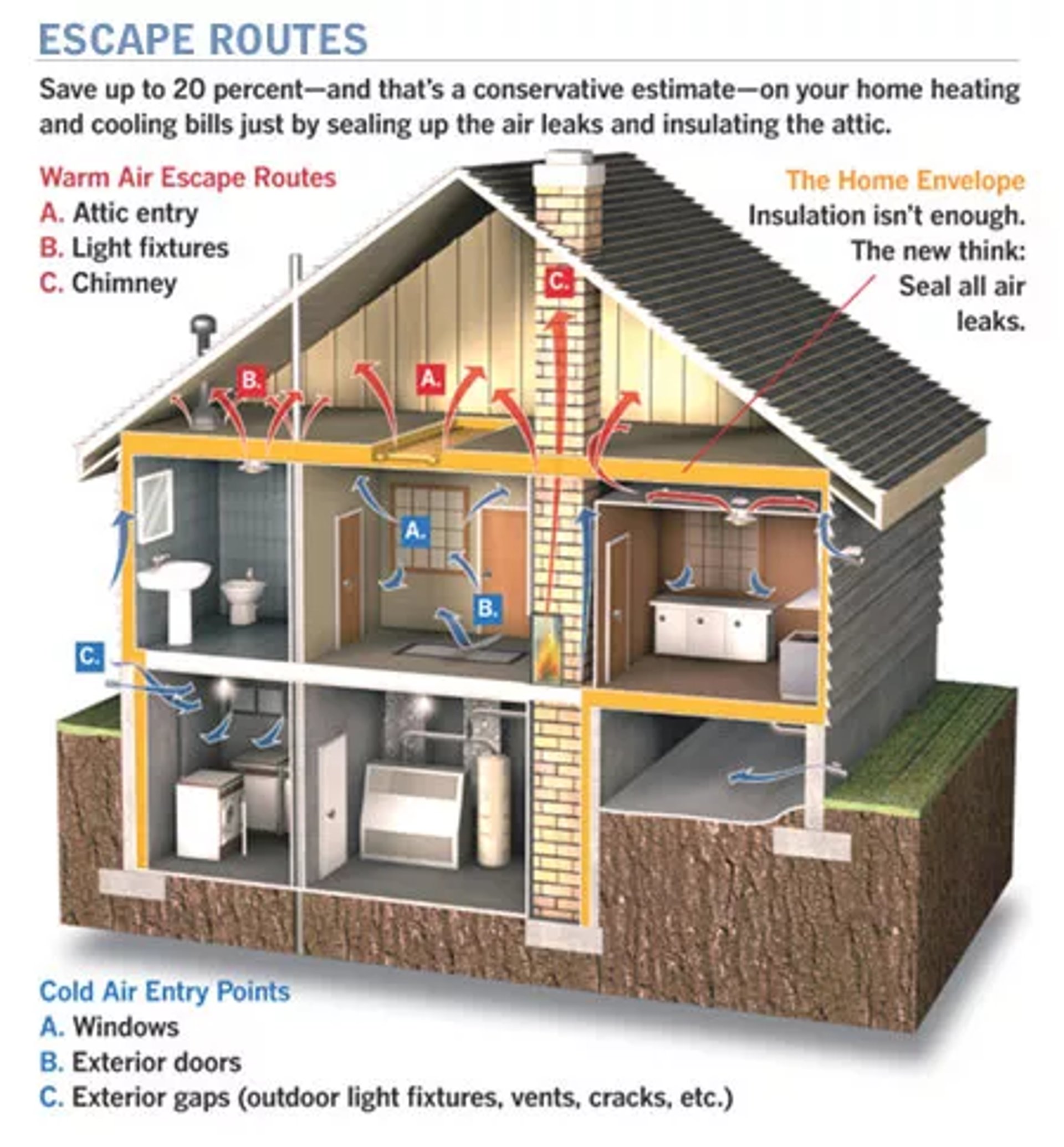
How to Detect Air Leaks in Your Home.
Identifying and Fixing Air Leaks in Your Home As homeowners, we often overlook the small gaps and cracks in our homes that allow air to escape or enter. These air leaks might seem insignificant, but they can have a big impact on your energy bills and comfort. Let's dive into why air leaks matter, how to identify them, and what you can do to fix them. Why Air Leaks Matter Air leaks can significantly affect your home in several ways: 1. Increased Energy Bills: When there are gaps in your home's envelope, your heating and cooling systems have to work harder to maintain a comfortable temperature, leading to higher energy consumption and costs. 2. Reduced Comfort: Drafts can make certain areas of your home uncomfortable, especially during extreme weather conditions. 3. Moisture Problems: Air leaks can lead to moisture ingress, which can cause mold growth and structural damage over time. 4. Poor Indoor Air Quality: Uncontrolled air flow can bring in pollutants and allergens from outside, negatively impacting your indoor air quality. Identifying Air Leaks The first step in addressing air leaks is to find them. Here are some common methods: 1. Visual Inspection: Check for gaps and cracks around doors, windows, baseboards, and electrical outlets. Look for any light coming through or feel for drafts. 2. The Candle Test: Light a candle and slowly move it around areas where leaks are suspected. If the flame flickers or goes out, you likely have a leak. 3. Thermal Imaging: Use a thermal camera to detect temperature differences in your home’s walls and ceilings, which can indicate air leaks. 4. Blower Door Test: Hire a professional to conduct a blower door test, which depressurizes your home and helps pinpoint leaks with precision. Fixing Air Leaks Once you've identified the leaks, it's time to seal them. Here are some effective solutions: 1. Caulking: Use caulk to seal small gaps and cracks around windows, doors, and other stationary components. 2. Weatherstripping: Apply weatherstripping to movable components like doors and windows to ensure a tight seal. 3. Spray Foam: For larger gaps and openings, such as those around plumbing and electrical penetrations, spray foam can be an effective solution. 4. Door Sweeps and Thresholds: Install door sweeps on the bottom of doors and thresholds to seal gaps at the floor level. 5. Outlet Gaskets: Place foam gaskets behind electrical outlets and switch plates to reduce drafts. Benefits of Sealing Air Leaks- By addressing air leaks, you can enjoy several benefits: - Lower Energy Bills: Reduced air leaks mean your heating and cooling systems work more efficiently, saving you money. - Enhanced Comfort: Eliminating drafts creates a more consistent and comfortable indoor environment. - Improved Indoor Air Quality: Sealing leaks can help keep pollutants and allergens out of your home. - Increased Home Value: Energy-efficient homes are more attractive to buyers, potentially increasing your home's resale value. Taking the time to identify and fix air leaks in your home is a worthwhile investment. Not only will it save you money on energy bills, but it will also make your home a more comfortable and healthy place to live. If you're not sure where to start, consider reaching out to a professional for an energy audit and personalized recommendations.
AIR SEAL
